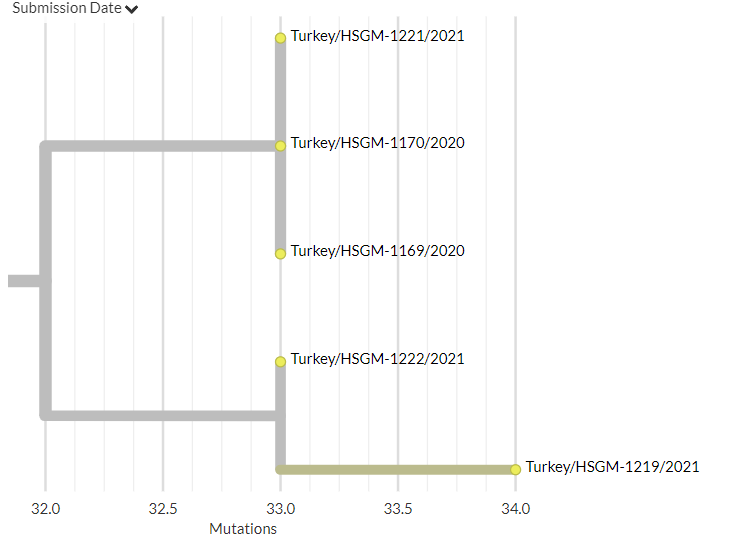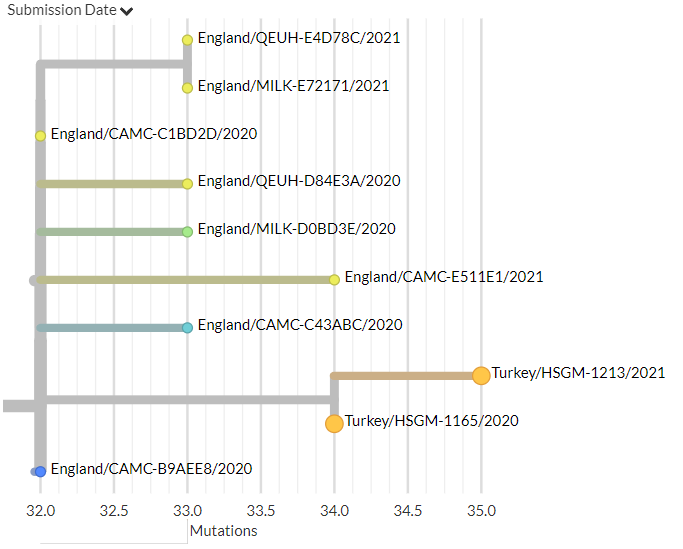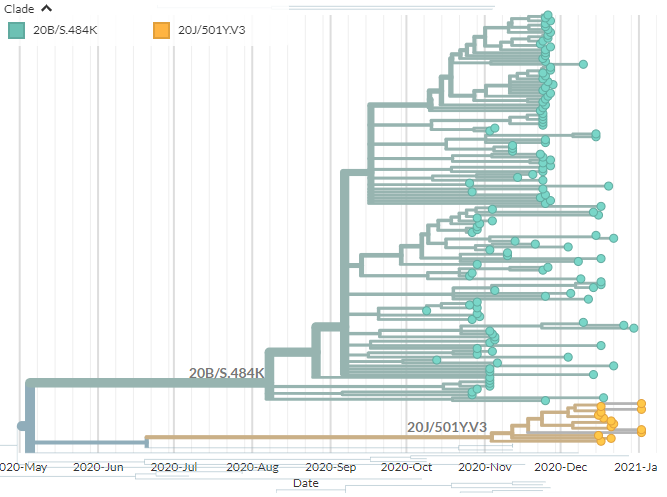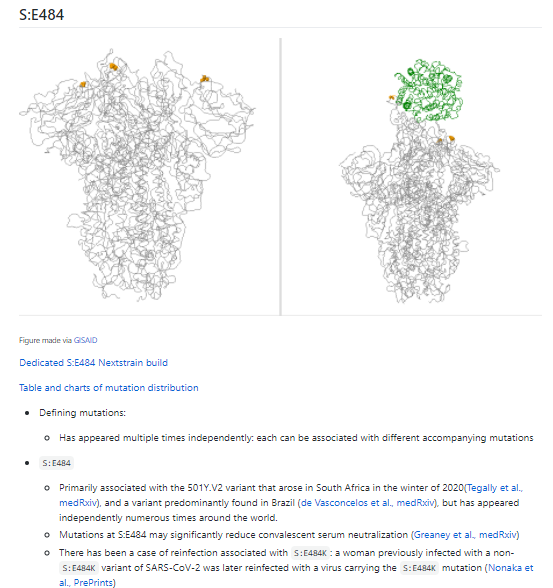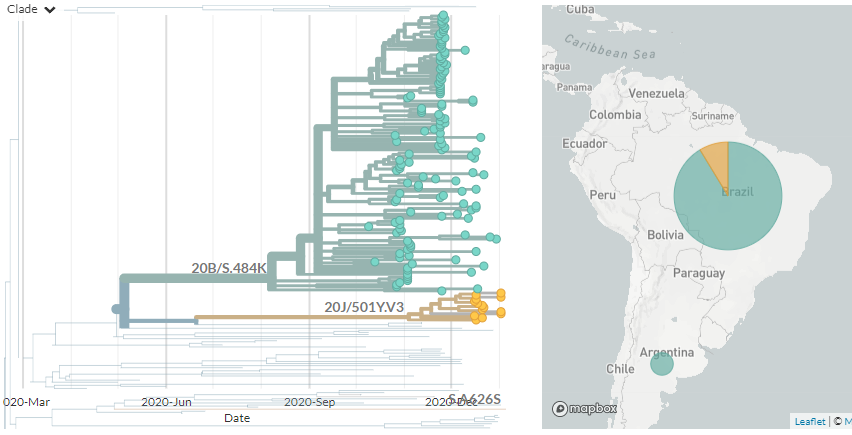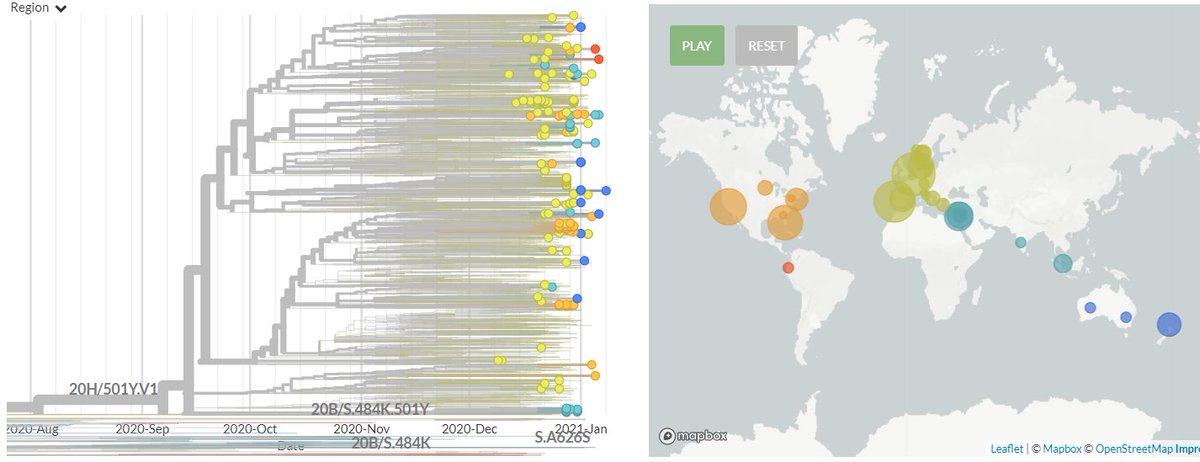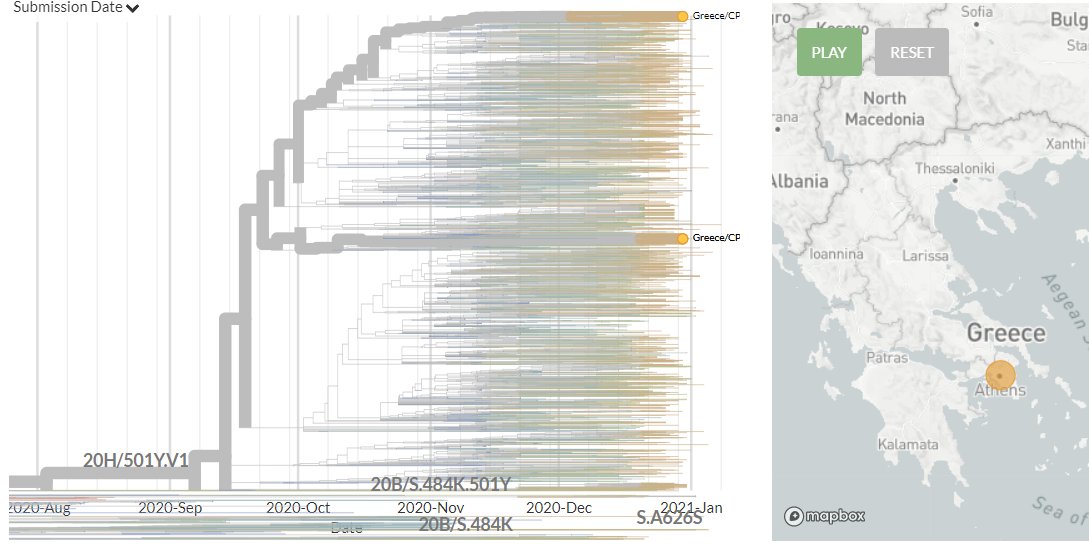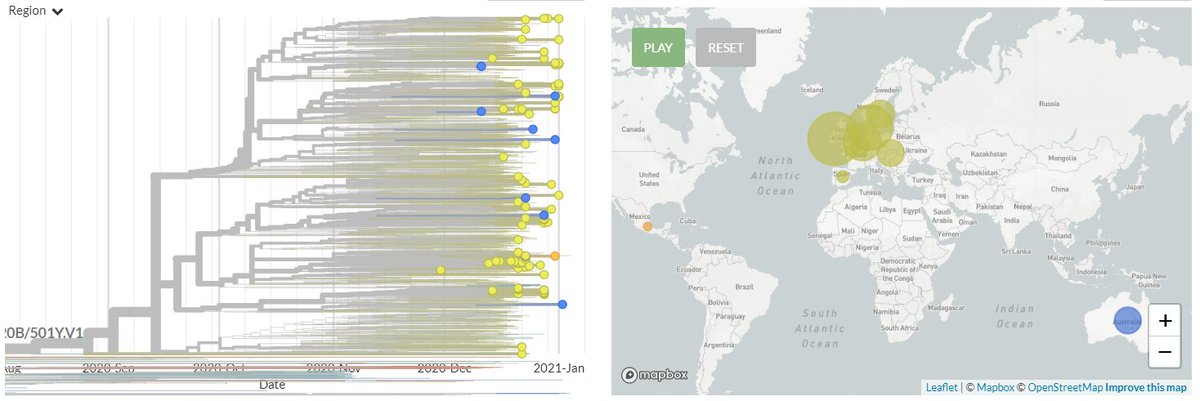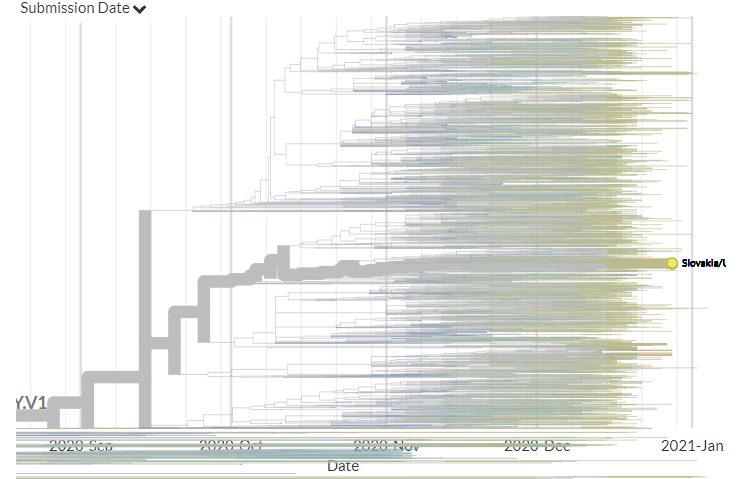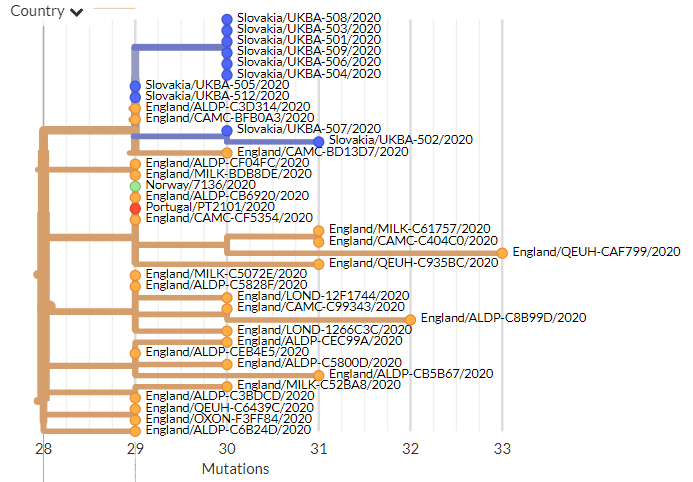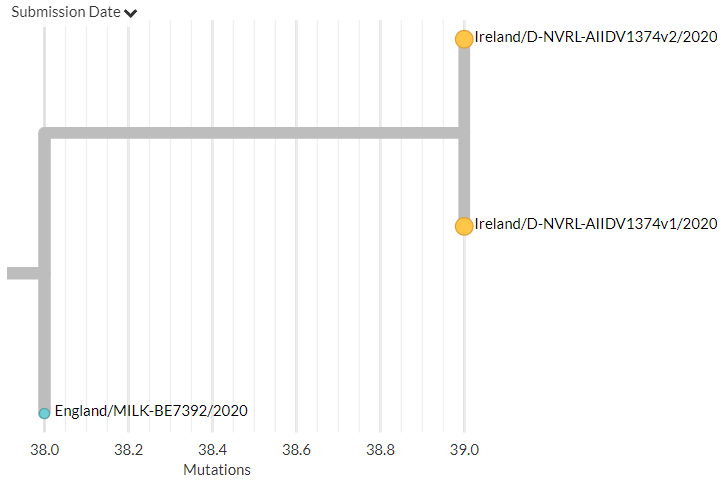
A #SARSCoV2 variant with a combination of mutations in Spike (S13I, W152C, L452R) has been making headlines & twitter rounds today, so - a fresh-from-the-oven 🥖 S:L452R focal build is now up - let's take a look:
1/10
1/10
https://twitter.com/cychiu98/status/1350985418628587520
This combination of mutations falls in 20C, and is found predominantly in the US, especially in California. Here's a zoomed view and link.
2/10
nextstrain.org/groups/neherla…
2/10
nextstrain.org/groups/neherla…

Importantly, we *don't yet know* if this variant is being pulled along with a general rise in cases, or some other environmental or behavioural change - or whether the mutations change the behaviour of the virus, like transmissibility.
Be wary of headlines claiming this!
3/10
Be wary of headlines claiming this!
3/10
As @trvrb points out, this variant seemed to be at low frequency for a while, then start growing in ~November.
This is early data, but may point to this being related to things other than a simple increase in transmissibility, for example.
4/10
This is early data, but may point to this being related to things other than a simple increase in transmissibility, for example.
4/10
https://twitter.com/trvrb/status/1351025379671212037
But let's see what we can see in the phylogeny...
We can see that most sequences & the earliest sequences are from California, then the variant spread across the USA. However, California sequences a fair amount, so it might just have been first detected here.
5/10
We can see that most sequences & the earliest sequences are from California, then the variant spread across the USA. However, California sequences a fair amount, so it might just have been first detected here.
5/10
We can see clusters of sequences in other states - like these in New Mexico, New York (pic 1), & Wyoming (pic 2) - which suggest local transmission in states outside of California.
6/10

6/10
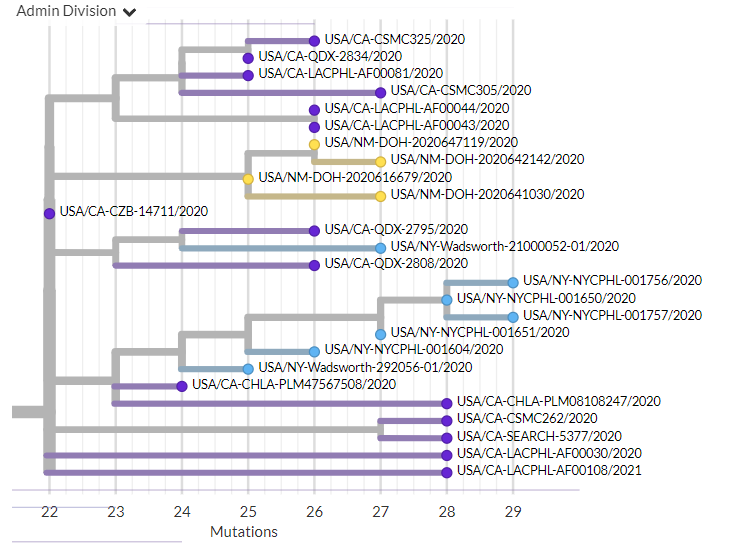
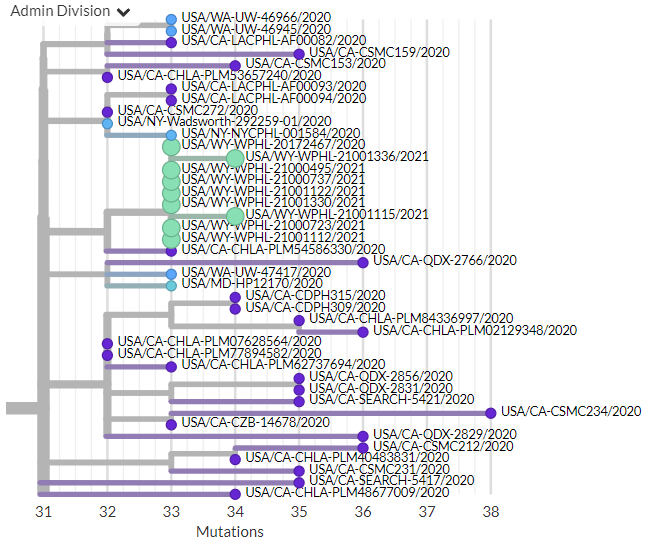
The variant has also been introduced outside of the US:
- Europe (yellow) in Denmark (1) & the UK (1)
- Asia (turquoise) in Singapore (1) & Israel (1)
- Oceania (blue) in Australia (7) & New Zealand (4)
7/10
- Europe (yellow) in Denmark (1) & the UK (1)
- Asia (turquoise) in Singapore (1) & Israel (1)
- Oceania (blue) in Australia (7) & New Zealand (4)
7/10
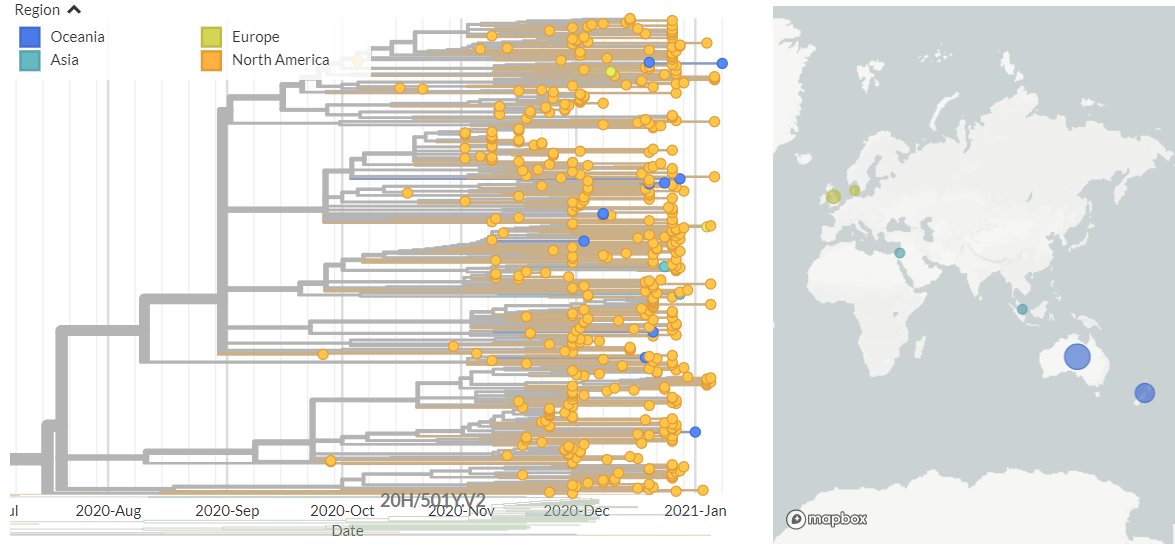
There's plenty we don't know about this variant yet, & scientists are hard at work to find out more.
It's important for scientists to be aware of such variants, but remember: we don't know this variant causes a difference in transmission - don't panic - wait for more info!
8/10
It's important for scientists to be aware of such variants, but remember: we don't know this variant causes a difference in transmission - don't panic - wait for more info!
8/10
As sequencing picks up & more people become interested in tracking the virus' variation (which is normal life as a virus), we'll see more variants!
The hard question is figuring out which have mutations that actually change the virus. Most probably don't!
9/10
The hard question is figuring out which have mutations that actually change the virus. Most probably don't!
9/10
You can read a bit more about the '452' variant in this article by @carlzimmer.
10/10
nytimes.com/live/2021/01/1…
10/10
nytimes.com/live/2021/01/1…
• • •
Missing some Tweet in this thread? You can try to
force a refresh





